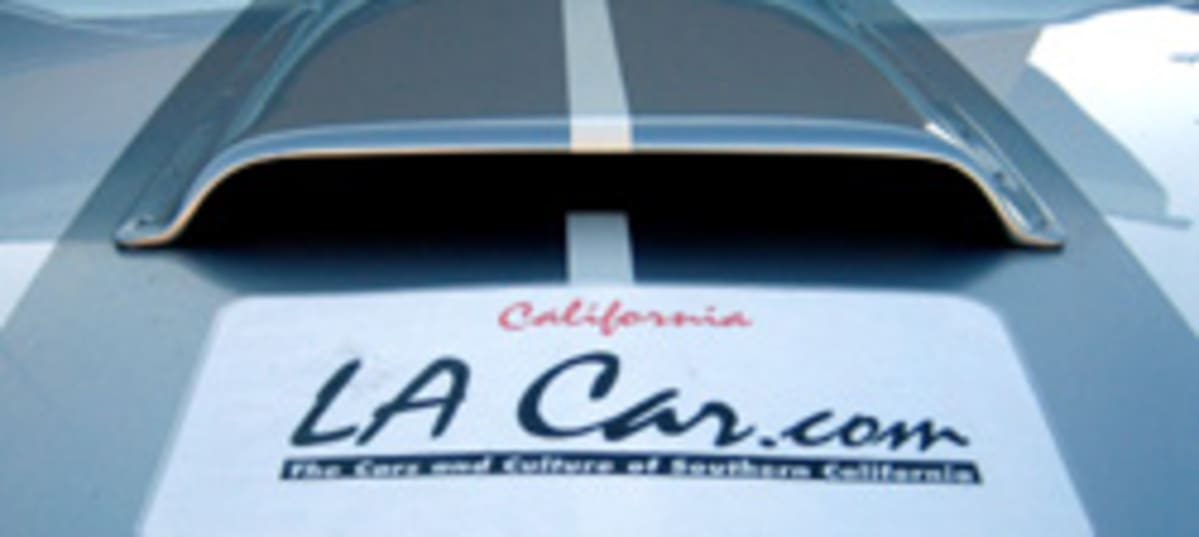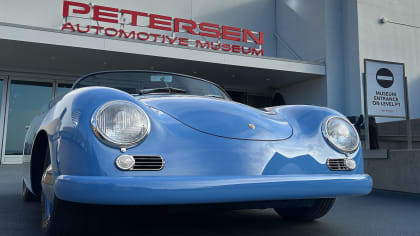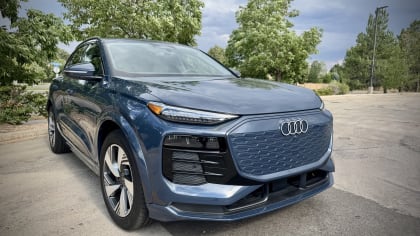BACK SEAT DRIVING - NOVEMBER 2007
This article is from our archives and has not been updated and integrated with our "new" site yet... Even so, it's still awesome - so keep reading!
Published on Thu, Nov 1, 2007
By: The LACar Editorial Staff

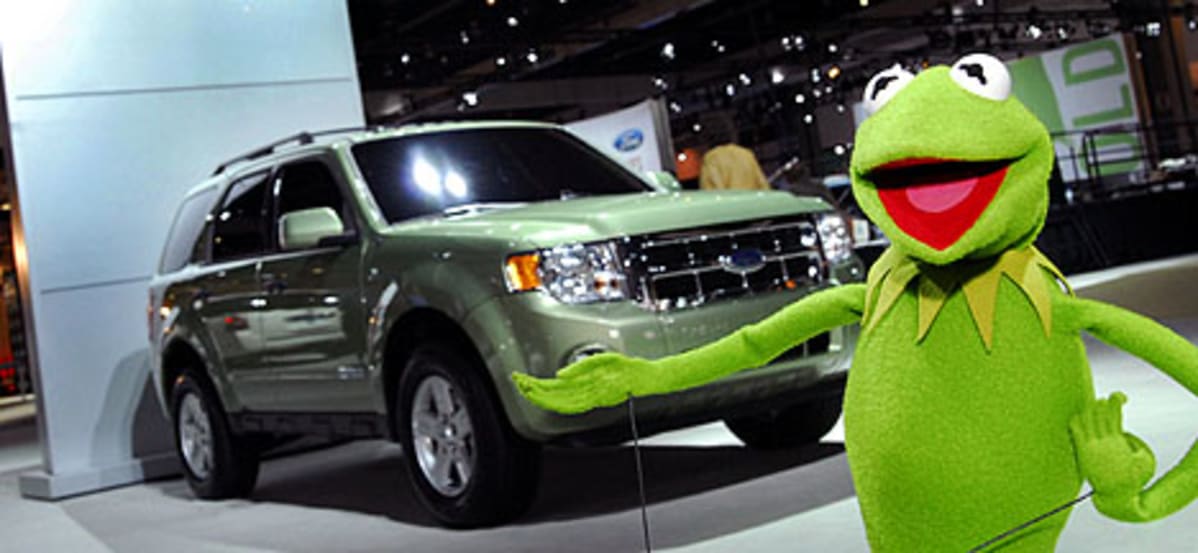
Ford Hybrid Escape
NAKANO: BACK SEAT DRIVING
THE PUBLIC FIGURE'S GUIDE TO PURCHASING CARS WITH PUBLIC FUNDS
The new president of Pasadena City College caused a bit of an uproar when she purchased a new Cadillac DTS (DeVille Touring Sedan) with community college funds. The transaction was completely legal, having gotten the stamp of approval from the local college's board of trustees. The problem was her choice of vehicle. The $54,244.46 DTS is the largest car in the Cadillac line and is EPA rated at 15 miles per gallon in the city. Her gasoline card is also footed by community college funds.
"I have a bad leg, and I'm a very tall woman - 5 foot 8 inches - so it provides plenty of leg room and it's been a comfortable car for me driving longer distances," said President Paulette Perfumo to the Pasadena Star ews.
There are very few cars sold in America that won't fit a 5-foot, 8-inch person - even with a bum leg. The cars chosen by past Pasadena City College presidents - a Ford Taurus, Chevrolet Lumina (now Malibu), Ford Explorer, and Toyota Highlander - will easily fit a 5-8 person. Leo DiCaprio, at 5-11, seems to fit just fine in his Toyota Prius.
But college presidents aren't expected to be automotive experts. They are, however, often put in the precarious position of having to lead by example. Fiscal belt-tightening is already being experienced by all of California's community colleges and even more is expected at the mid-year cycle due to the state budget short falls. Add to this, the concerns over global warming, energy conservation and decreasing our dependence on foreign oil, and you can see why the purchase of a Cadillac DTS may be sending the wrong signal. Aside from the price and gas mileage factors, the Kelley Blue Book people indicate that the DTS will have a trade-in value only worth about half the original price in two years.
SO, WHAT'S THE RIGHT SIGNAL?
LA Car has come up with some novel "best of" lists in the past, including The Best Cars to Drive in Rush-Hour Traffic and Surveying The Best New Car Sound Systems. Why not a list of the best cars to purchase with public funds? As the head of an institution for higher education, the purchase should reflect eco-friendliness, money wisely spent, and still be able to escort guests in comfort. For future college presidents and the like, here are my candidates (in alphabetical order):
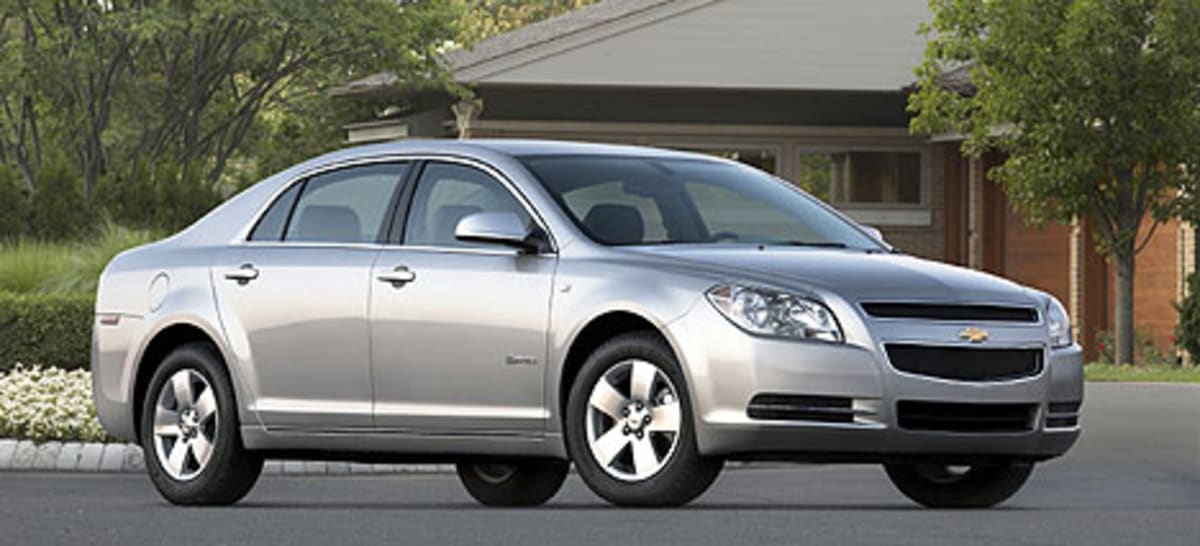
Chevrolet Malibu Hybrid
The new Malibu is an exceptional car, and bodes well for the direction of parent company General Motors. You can see a lot of the Volkswagen Phaeton in the exterior design, and the interior execution is the best in its class. The hybrid version is not a "full hybrid" in the sense of the Toyota Prius, but it's still good for a 25-30 percent savings on gas over a non-hybrid Malibu. $22,140 (EPA city/highway: 24/32 mpg)
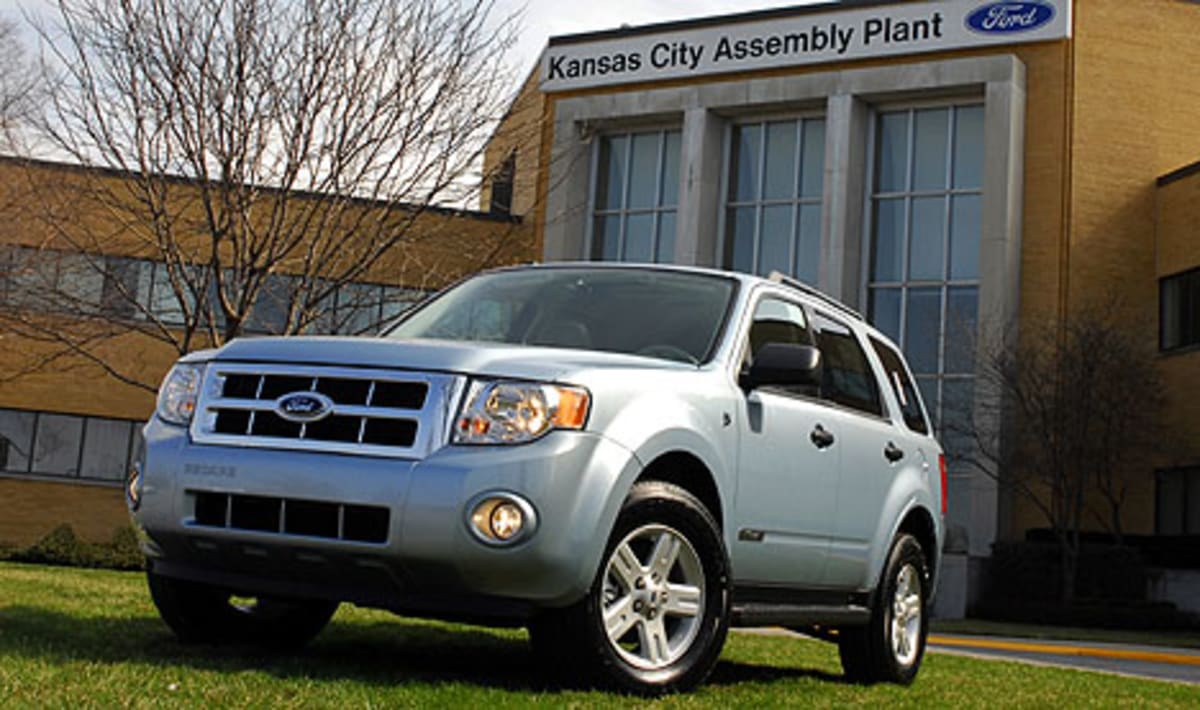
Ford Escape Hybrid
This may be the best car for this particular list. Not only is it a full hybrid with the best gas mileage of any SUV sold here, it's made in the USA under an American brand that is perceived to be struggling amid foreign competition. The Ford Escape Hybrid has also proven to be very reliable. $25,075 (EPA city/highway: 36/31 mpg)
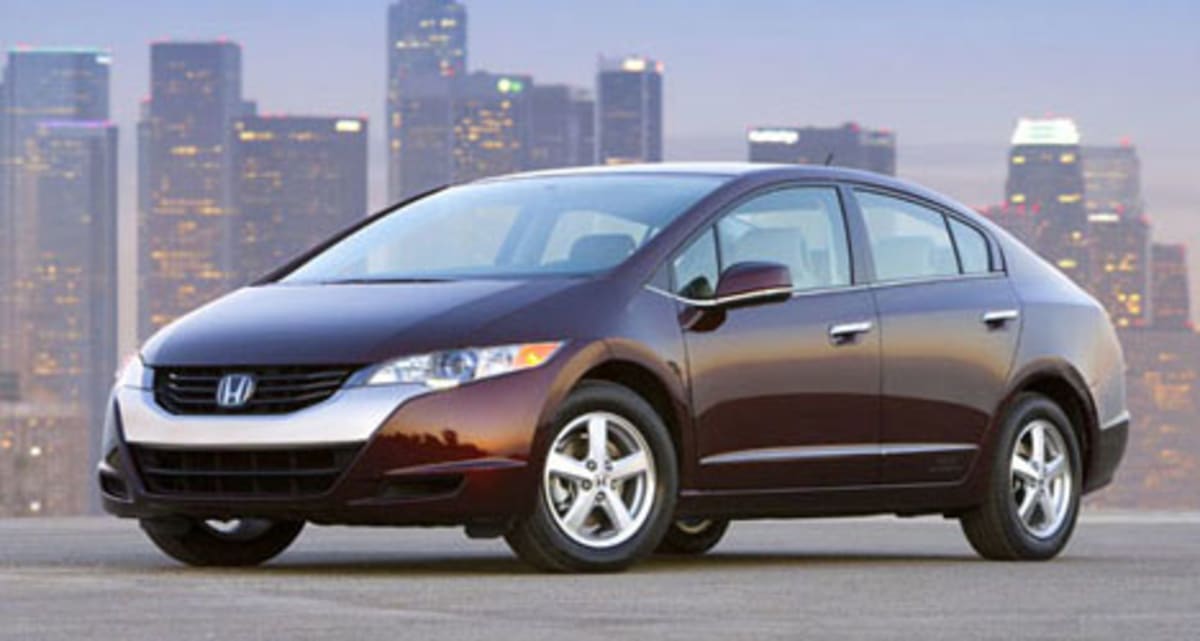
Honda FCX Clarity
This vehicle won't be available until the summer of 2008, and only via lease. Also, it's hydrogen fuel cell technology will require that you be situated near the communities of Irvine, Santa Monica or Torrance. However, this zero-emissions fuel cell car with its 100 percent recycled materials interior will bring tons of great PR for its drivers. Any college presidents in the aforementioned vicinities are highly encouraged to get on the list for this one. $600/month
(manufacturer est. 68 mpg combined city-highway)

Mercury Mariner Hybrid
It's the Mercury twin of the Escape Hybrid and every bit as good. Full hybrid. American-made. American brand. The Mercury Mariner Hybrid looks a bit more upscale inside and out, without much of an increase in price over the Escape Hybrid. $25,765 (EPA city/highway: 36/31 mpg)
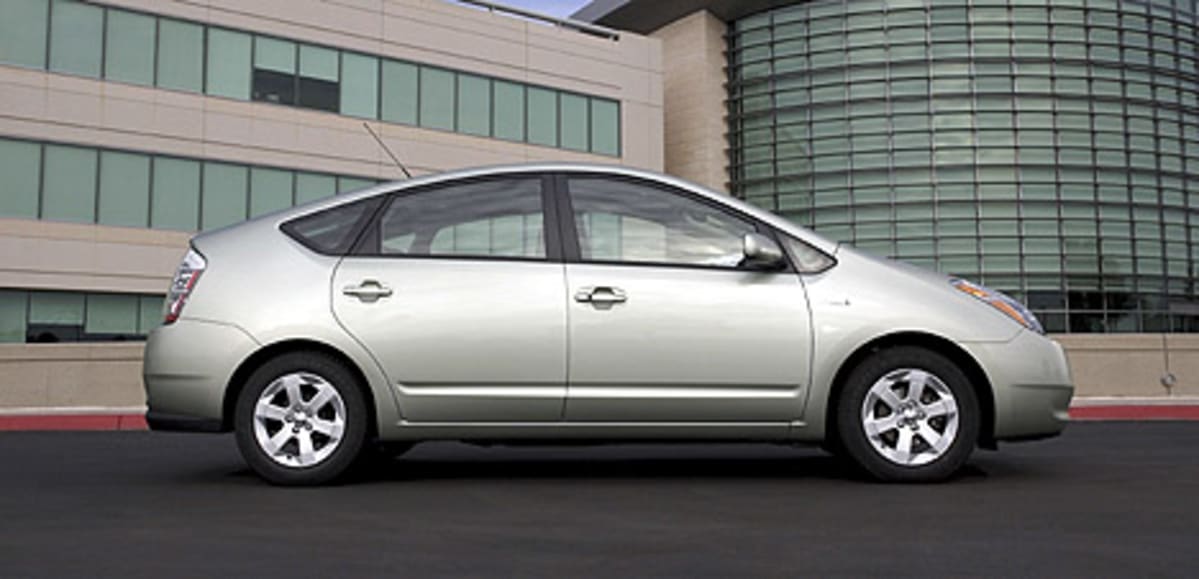
Toyota Prius
This car has so much green cache that it's become a status symbol for Hollywood movie stars. It has a surprising amount of room inside, and the EPA rates it as having the highest mileage of any car sold in America. The shape of the Prius is instantly recognizable. You won't have to point to any tiny "hybrid" badge to show off your energy conservation credentials. $20,950 (EPA city/highway: 48/45 mpg)
HONORABLE MENTIONS
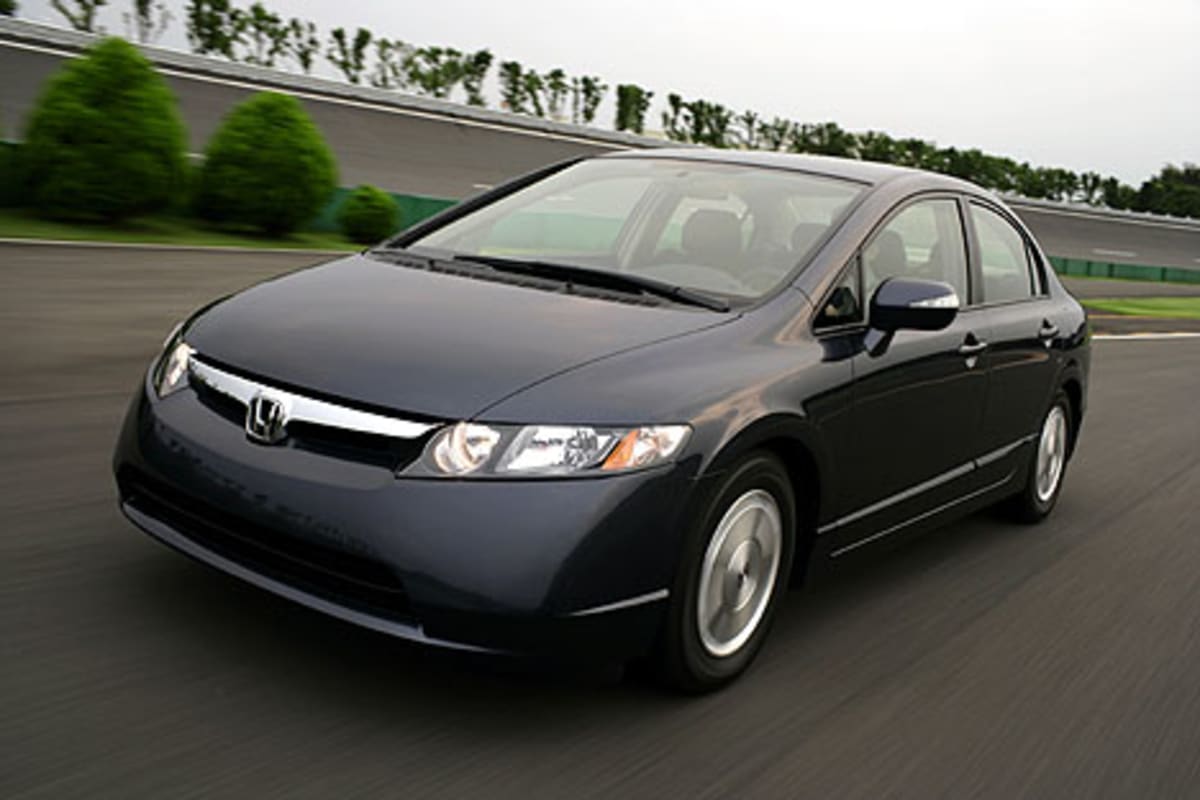
Honda Civic Hybrid
It's appearance doesn't scream "hybrid" the way the Prius does. It also lacks the Prius' interior room and it's "partial hybrid" system won't allow it to operate fully on its electric motors the way "full hybrids" can. Nonetheless, the Civic Hybrid a very solid Honda product. $22,600 (EPA city/highway: 40/45)
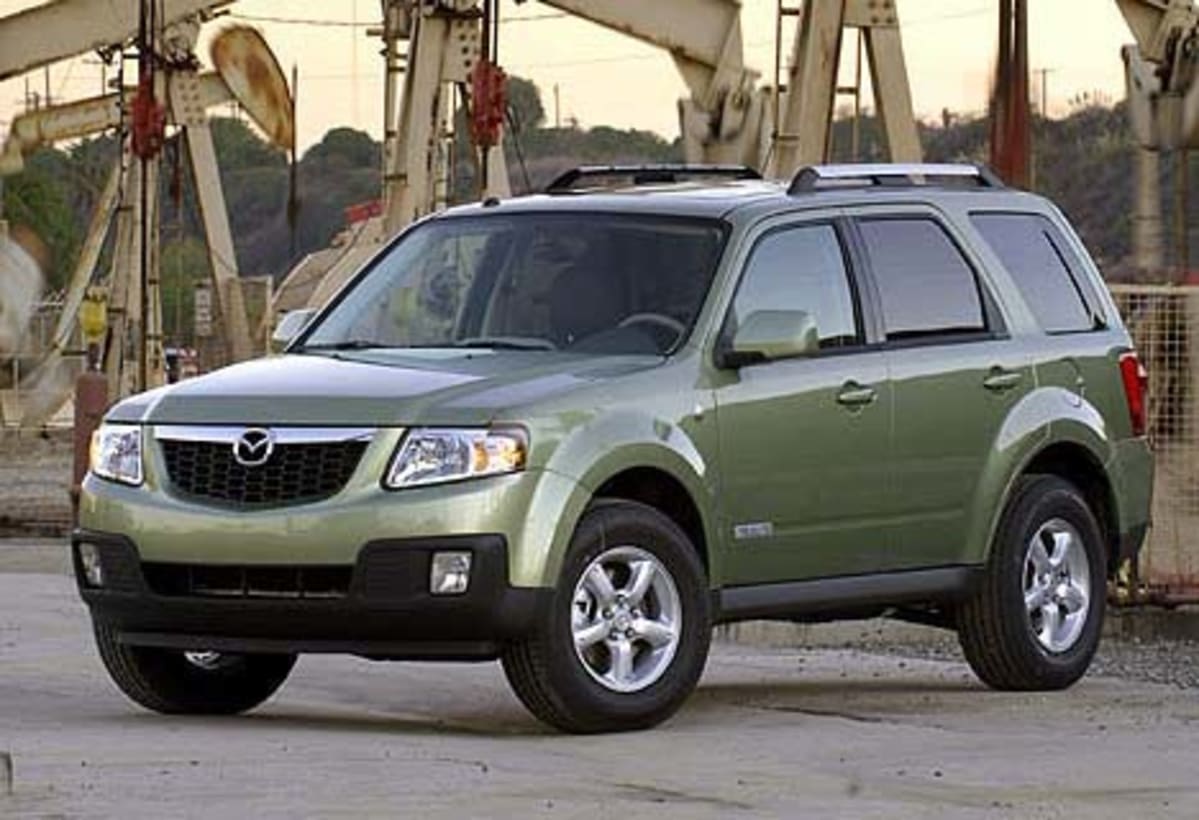
Mazda Tribute Hybrid
Underneath, it's the same vehicle as the Ford Escape Hybrid and Mercury Mariner Hybrid. It's a full hybrid and it's made in America. It's Mazda branding keeps it out of the same perception league as the Ford and Mercury (never mind that Ford owns a controlling share of Mazda). $25,310 (EPA city/highway: 36/31 mpg)
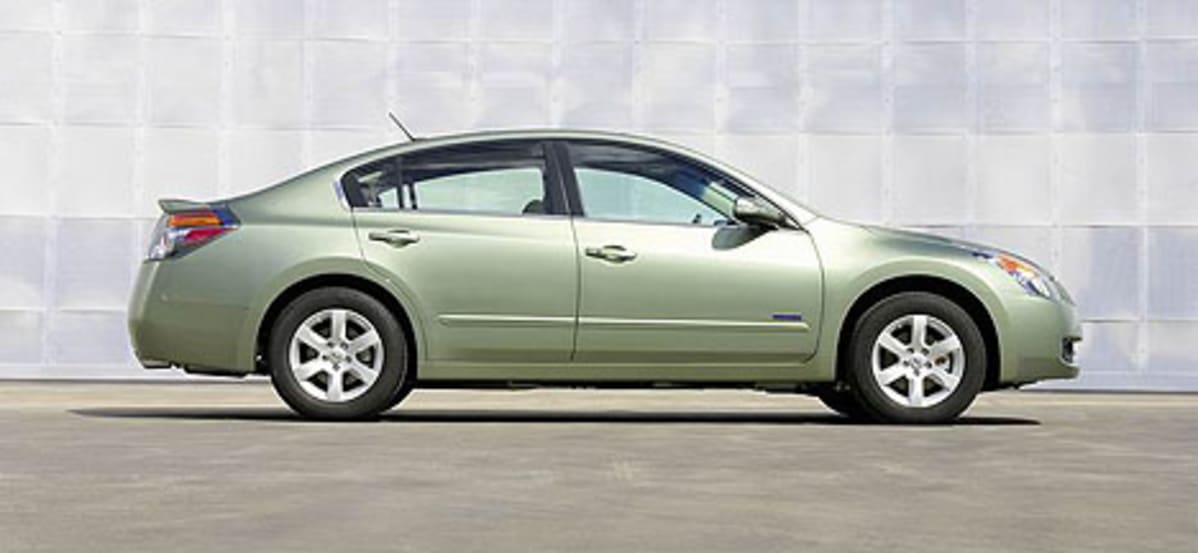
Nissan Altima Hybrid
It's a full hybrid, and the new Nissan Altima is an excellent sedan - a considerable improvement over past models. It's major failing is that it's hybrid pedigree is invisible. You'll be lucky if anyone notices that it's a hybrid. $25,070 (EPA city/highway: 42/36 mpg)
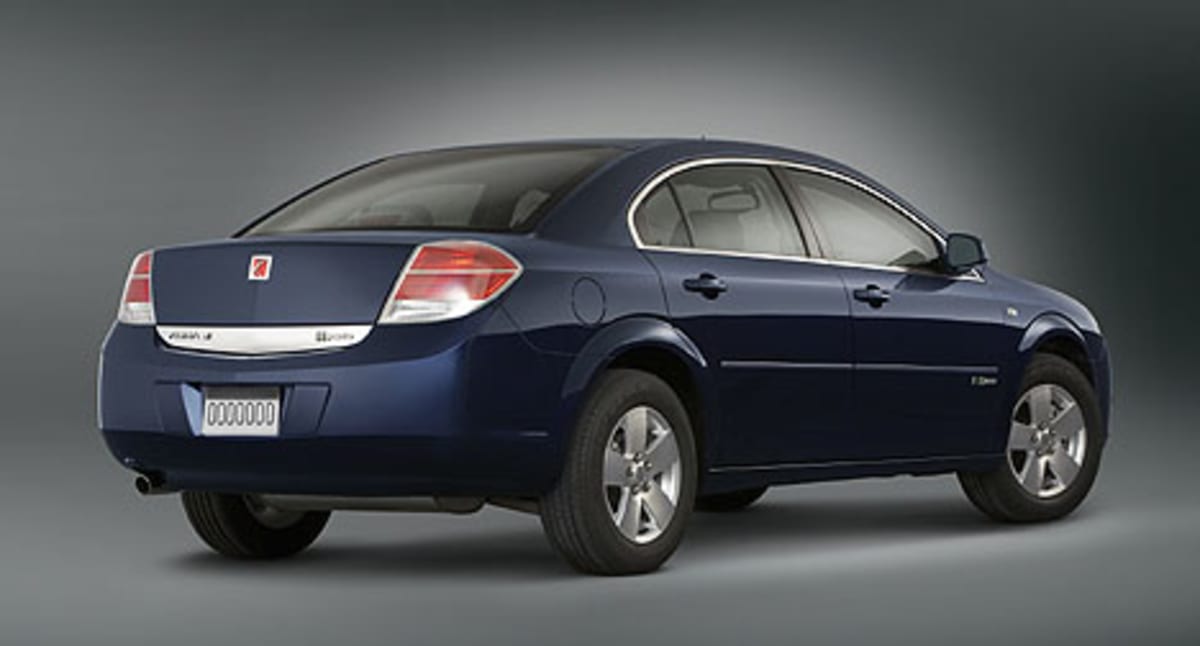
Saturn Aura Green Line
It carries the same partial hybrid system as the Malibu in a slightly older design. It has the same invisibility problem as the Altima Hybrid, but the Green Line is not that much more expensive than the non-hybrid Aura. $22,140 (EPA city/highway: 24/32 mpg)
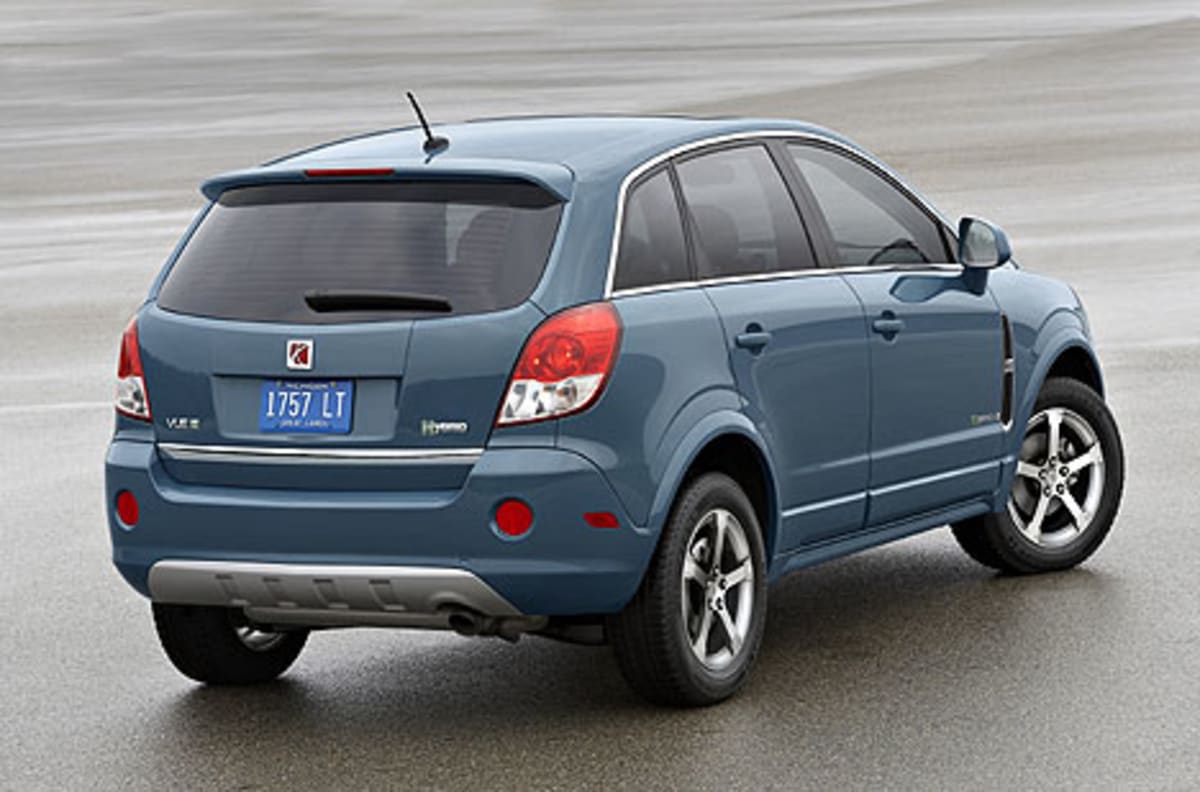
Saturn VUE Green Line
American made. American brand. The partial hybrid design keeps the costs down. Consequently, the Saturn VUE Green Line is the least-expensive hybrid SUV that your money can buy. $24.170 (EPA city/highway: 25/32 mpg)
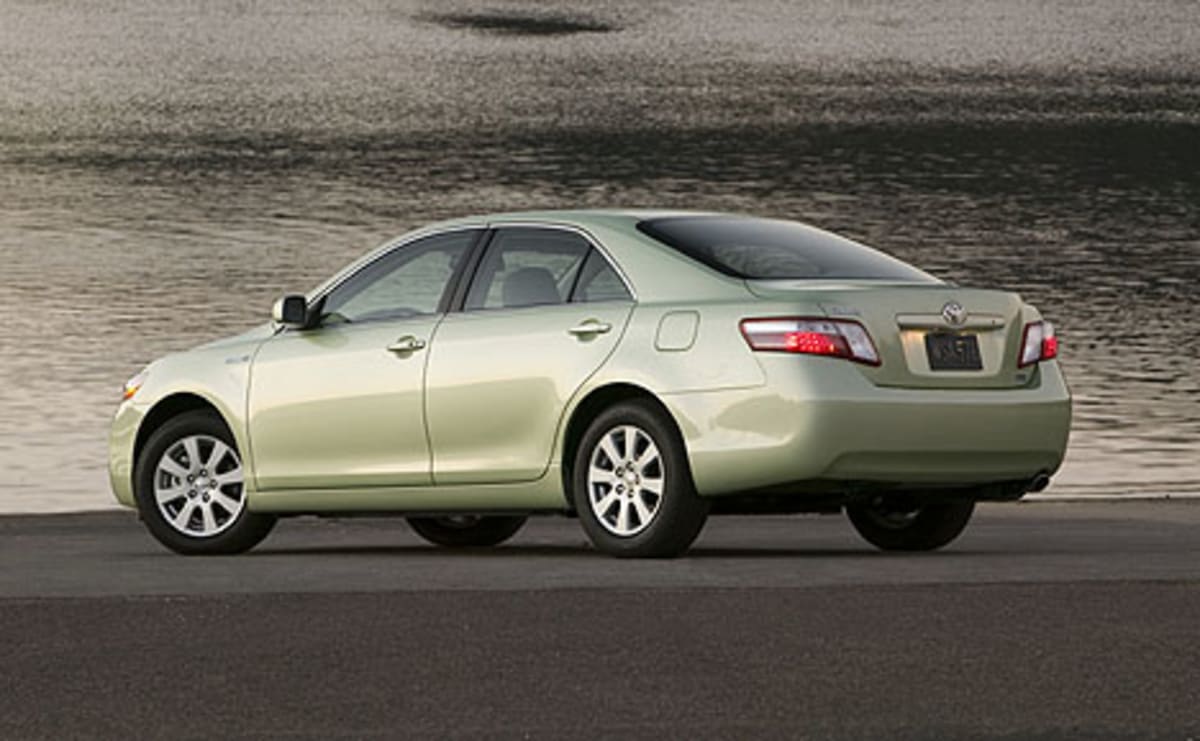
Toyota Camry Hybrid
The Toyota Camry Hybrid became the first hybrid sedan manufactured in the USA, following the SUV crossover Escape Hybrid. Built in Georgetown, Kentucky, the Camry Hybrid benefits from Toyota's experience in building full hybrid vehicles. $25,200
(EPA city/highway: 33/34 mpg)
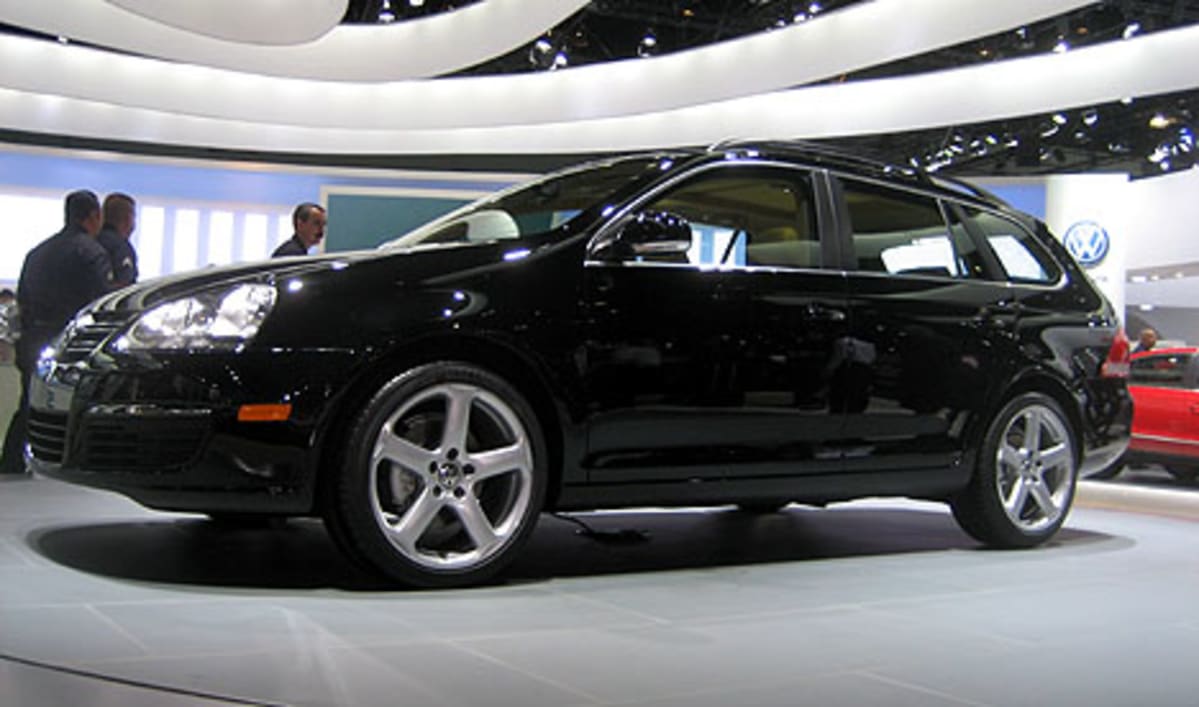
Volkswagen Jetta TDI 50-state compliant, the new Jetta TDI/Jetta SportWagen TDI will be the cleanest diesel sold in the USA when it arrives in mid 2008. Diesels contribute about a third less to global-warming compared to the gas-engine counterparts. Alas, you'll be fighting public perception about dirty old diesels from the past. $23,000 est. (manufacturer est. city/highway: 34/43) You'll notice that high fuel economy, eco-friendliness and cost are common attributes of the aforementioned vehicles. If you happen to be a lawmaker, you'll need to add manufacturing origin and American branding to the list. In the end, when it comes to cars driven by public figures, perception is everything. Your Back Seat Driving comments can be sent to: Letter to the Editor
NAKANO: BACK SEAT DRIVING THE WORST SPEED TRAP CITIES IN ALL 50 STATES Thanksgiving is one of the busiest travel times of the year. As people prepare for their holiday trips, they might want to be on the lookout for speed traps. As a public service, the National Motorists Association (NMA) has prepared a list of the worst speed trap cities in all fifty states. The list was created from the NMA's SpeedTrap Exchange (speedtrap.org), a site devoted to identifying the location of speed traps. The results were drawn from a combination of two sources. The first source was an online poll on the NMA network of websites (motorists.org and speedtrap.org). The poll asked visitors to choose the worst speed trap city in their state. The second source was an analysis of the postings on speedtrap.org over the last two years. The NMA says all motorists would be well-advised to keep these locations in mind while driving this holiday: ALABAMA Worst Speedtrap: Montgomery Dishonorable Mention: Birmingham, Huntsville, Uniontown ALASKA Worst Speedtrap: Anchorage Dishonorable Mention: Fairbanks, Juneau, Seward ARIZONA Worst Speedtrap: Tucson Dishonorable Mention: Gilbert, Phoenix, Scottsdale ARKANSAS Worst Speedtrap: Little Rock Dishonorable Mention: Augusta, Fayetteville, Parkin CALIFORNIA Worst Speedtrap: Fresno Dishonorable Mention: Fullerton, Los Angeles, San Jose COLORADO Worst Speedtrap: Colorado Springs Dishonorable Mention: Aurora, Denver, Fort Collins CONNECTICUT Worst Speedtrap: Enfield Dishonorable Mention: Danbury, Groton, New Canaan DELAWARE Worst Speedtrap: Newark Dishonorable Mention: Dover, Felton, Fenwick Island FLORIDA Worst Speedtrap: Waldo Dishonorable Mention: Lawtey, Ocala, Orlando GEORGIA Worst Speedtrap: Pendergrass Dishonorable Mention: Atlanta, Duluth, Marietta, HAWAII Worst Speedtrap: Honolulu Dishonorable Mention: Kailua, Kaimuki, Maui IDAHO Worst Speedtrap: Boise Dishonorable Mention: Idaho Falls, Lewiston, Post Falls ILLINOIS Worst Speedtrap: Naperville Dishonorable Mention: Carol Stream, New Lenox, Peoria INDIANA Worst Speedtrap: Indianapolis Dishonorable Mention: Bloomington, Culver, Fort Wayne IOWA Worst Speedtrap: Des Moines Dishonorable Mention: Ames, Cedar Rapids, Davenport KANSAS Worst Speedtrap: Shawnee Dishonorable Mention: Leawood, Overland Park, Topeka KENTUCKY Worst Speedtrap: Louisville Dishonorable Mention: Lexington, Middlesboro, Owensboro LOUISIANA Worst Speedtrap: Woodworth Dishonorable Mention: Baton Rouge, Lake Charles, Metairie MAINE Worst Speedtrap: Kittery Dishonorable Mention: Augusta, Falmouth, Portland MARYLAND Worst Speedtrap: Frederick Dishonorable Mention: Columbia, Hagerstown, Waldorf MASSACHUSETTS Worst Speedtrap: Worcester Dishonorable Mention: Lowell, Newton, Springfield MICHIGAN Worst Speedtrap: Livonia Dishonorable Mention: Ann Arbor, Redford, Warren MINNESOTA Worst Speedtrap: Minneapolis Dishonorable Mention: Bloomington, Elk River, Plymouth MISSISSIPPI Worst Speedtrap: Starkville Dishonorable Mention: Jackson, McComb, Tupelo MISSOURI Worst Speedtrap: Foristell Dishonorable Mention: Curryville , Independence, St. Charles MONTANA Worst Speedtrap: Missoula Dishonorable Mention: Darby, Havre, Joliet NEBRASKA Worst Speedtrap: Omaha Dishonorable Mention: Bellevue, Grand Island, Lincoln NEVADA Worst Speedtrap: Las Vegas Dishonorable Mention: Henderson, Pahrump, Reno NEW HAMPSHIRE Worst Speedtrap: Manchester Dishonorable Mention: Nashua, New London, Somersworth NEW JERSEY Worst Speedtrap: Paramus Dishonorable Mention: Bridgewater, Monroe Township, North Brunswick NEW MEXICO Worst Speedtrap: Albuquerque Dishonorable Mention: Cuba, Las Cruces, Rio Rancho NEW YORK Worst Speedtrap: Brooklyn Dishonorable Mention: Batavia, Rochester, Staten Island NORTH CAROLINA Worst Speedtrap: Raleigh Dishonorable Mention: Charlotte, Greensboro, Wilmington NORTH DAKOTA Worst Speedtrap: Grand Forks Dishonorable Mention: Fargo, Thompson, Washburn OHIO Worst Speedtrap: Columbus Dishonorable Mention: Akron, Canton, Lindale OKLAHOMA Worst Speedtrap: Caney Dishonorable Mention: Moffet, Moore, Kiowa OREGON Worst Speedtrap: Portland Dishonorable Mention: Beaverton, Eugene, Springfield PENNSYLVANIA Worst Speedtrap: Horsham Dishonorable Mention: Feasterville, Harrisburg, Warrington RHODE ISLAND Worst Speedtrap: Providence Dishonorable Mention: Johnston, Pawtucket, Warwick SOUTH CAROLINA Worst Speedtrap: Greenville Dishonorable Mention: Columbia, Gaffney, Society Hill SOUTH DAKOTA Worst Speedtrap: Sioux Falls Dishonorable Mention: Rapid City, Wagner, Yankton TENNESSEE Worst Speedtrap: Nashville Dishonorable Mention: Memphis, Piperton, Smyrna TEXAS Worst Speedtrap: Houston Dishonorable Mention: Arlington, Austin, Estelline UTAH Worst Speedtrap: Sandy Dishonorable Mention: Roy, Salt Lake City, West Valley City VERMONT Worst Speedtrap: Wilmington Dishonorable Mention: Barre Town, Island Pond, Norwich VIRGINIA Worst Speedtrap: Virginia Beach Dishonorable Mention: Chesapeake, Emporia, Norfolk WASHINGTON Worst Speedtrap: Bellingham Dishonorable Mention: Black Diamond, Ritzville, Seattle, WEST VIRGINIA Worst Speedtrap: Summersville Dishonorable Mention: Charleston, Gauley Bridge, Hurricane WISCONSIN Worst Speedtrap: Rosendale Dishonorable Mention: Appleton, Milwaukee, Waukesha WYOMING Worst Speedtrap: Thermopolis Dishonorable Mention: Cheyenne, Jackson Hole, Rawlins Although these are the worst speed trap cities in the nation, arbitrarily low speed limits combined with heavy enforcement means there are many other areas in which drivers should be alert to avoid traffic citations. Motorists who wish to enjoy their traveling time this weekend should visit speedtrap.org for a full list and specific locations of speed traps. The National Motorists Association was established in 1982 to represent the interests and rights of North American motorists. It is a grassroots organization that operates at the national level and through a system of state chapters. "It continues to advocate safe and reasonable speed limits set in accordance with traffic engineering standards, not arbitrary political whim," says NMA ppokesperson Aaron Quinn. The NMA is supported through the contributions of individuals, families, and small businesses. Your Back Seat Driving comments can be sent to: Letter to the Editor

NAKANO: BACK SEAT DRIVING ANTI-FRESNO PRIUS COMMERCIAL? Toyota pulls anti-Fresno Prius ad after Senator Feinstein complains One of the cleverest car commercials has just been given the hook. Toyota Motor Corporation pulled an ad that likened Fresno to an outdated pit stop. The action was evidently taken after Senator Dianne Feinstein wrote the car company to complain. Feinstein's letter to Shige Hayakawa, president of Toyota North America, which was released by the senator's office, expresses "profound disappointment with the current Toyota Prius advertising campaign which gratuitously insults the city of Fresno." The commercial depicts people driving the fuel-efficient Prius in an imagined future in which "gas stations will become nothing more than low-budget tourist stops. Like ghost towns ... or Fresno." Fresno Mayor Alan Autry didn't see the humor in the commercial, so he asked the Senator to intervene. Autry has his view of why the ad agency would pick on Fresno: "These folks really don't have a lot of creativity," he said to the Fresno Bee. "Singling out the city is something that "just rears up every now and then. We may not have a bay or a beach, but if you're looking for a place to raise a family, Fresno doesn't have a peer." "I've lived in Fresno for 16 years. Having traveled around the country, Fresno really is a dump," says Dan Kruse on Autoblog Green. "The only reason people come here is when traveling from L.A. or Sacramento." City Council Member Mike Dages told the Bee that he thinks taking shots at Fresno goes all the way back to the early 1980s, when then-Mayor Dan Whitehurst went on a late-night television show and made a number of self-deprecating remarks about the city. "Perception is a tough thing to get rid of," said Dages. "But I don't know how many people from Fresno are going to buy a Prius. Agencies should know better than that." Toyota officials recalled the spot produced for auto dealers in the Southeast U.S., and edited out any mention of Fresno, according to the Associated Press. "City council member Henry Perea said he'd forgive Toyota if the carmaker opened a Prius factory in Fresno." View the Prius commercial here Your Back Seat Driving comments can be sent to: Letter to the Editor
NAKANO:
BACK SEAT DRIVING
HOLY COW!

We've heard of it raining cats and dogs - even fish and frogs on occasion, but commuters in Anson, Washington have even bigger fish to fry. According to the Associated Press, Charles and Linda Everson were driving back to their Anson hotel when their minivan was struck by a falling object - a 600-pound cow. "The Eversons were unhurt but the cow, which had fallen off a cliff, had to be euthanized," reports AP. "The year-old cow fell about 200 feet from the cliff and landed on the hood of the couple's minivan, causing heavy damage." A Chelan County fire chief, Arnold Baker, said the couple missed being killed by a matter of inches in the accident Sunday on a highway near Manson. The Eversons, visiting the area from their home in Westland, Mich., to celebrate their first wedding anniversary, were checked at Lake Chelan Community Hospital as a precaution. Everson, 49, said he didn't see the cow falling and didn't know what happened until afterward. AP reports that e said he kept repeating: "I don't believe this. I don't believe this." To view a video clip of the falling cow, click here Your Back Seat Driving comments can be sent to: Letter to the Editor
NAKANO: BACK SEAT DRIVING BLINDED BY THE LIGHT VISION PROBLEMS MAKE DRIVING IN THE DARK DIFFICULT Now that daylight savings time is here (as millions of Americans set their the clocks back an hour on November 4th) and we are seeing fewer hours of daylight, findings from a new survey raise concerns for drivers, passengers, and pedestrians about what people may not be seeing while driving in the dark. Of further concern, while most believe that correcting their vision problems would improve their ability to drive in low-light conditions, many have never talked to an eye care professional about treatment options. Nearly one of every three drivers on the road (32 percent) say they have difficulty seeing all or most of the time while driving in the dark according to "Shedding Light on Driving in the Dark," a nationwide survey conducted by Kelton Research. More than one-fourth (26 percent) report that they have trouble seeing signs or exits; one-fifth (20 percent) acknowledge difficulty seeing animals or pedestrians, and one-fifth (20 percent) also have difficulty with seeing turns in the road. More than one in five (22 percent) also report problems in judging distance while driving in the dark. A total of 515 vision-corrected Americans aged 18 and over participated in the survey. Nearly a quarter (23 percent) of respondents expressed concern and a lack of confidence about their driving skills in the dark. Vision problems and discomfort also leave them feeling concerned (24 percent) and unsafe (21 percent) behind the wheel. "Driving in the dark is one of the most hazardous situations faced by a driver" says Courtney Caldwell, founder and editor-in-chief of Road & Travel Magazine. "Roads with low or no lighting, glare from headlights, and fluctuations in vision are contributing factors to the disproportionately high rate of car accidents and fatalities that occur between dusk and dawn." Both the National Highway Traffic Safety Administration and the National Safety Council site the fatality rate at nighttime (6:00 P.M. - 6:00 A.M.) to be three times higher than the daytime rate. Respondents complained of eyestrain (38 percent), dry or tired eyes (34 percent), fatigue (25 percent), headaches (19 percent), inability to focus (18 percent) and double or blurred vision (15 percent) while driving in the dark. More than six in ten (61 percent) say that headlights from oncoming traffic or from cars behind them are particularly bothersome, and nearly half (48 percent) report experiencing glare or light sensitivity while driving in the dark. "Low light levels cause an eye's pupil to dilate, which can accentuate any existing focusing problems and result in blurred vision" explains Dr. Elise Brisco, a Los Angeles based optometrist. "This is particularly common among people with astigmatism because the shape of the cornea prevents light from focusing properly on the retina, often leading to blurred vision, which can impair a driver's speed of visual reaction time and affect the ability to quickly identify and localize possible hazards on the road." About two-fifths (39 percent) of respondents said they have been diagnosed or treated for astigmatism, a common vision condition in which surfaces of the eye, including the cornea, have an oval shape. Compared to the overall vision-correction population, people with astigmatism were significantly more likely than other vision-corrected respondents to report being disturbed by glare or light sensitivity (55 percent vs. 48 percent of others) and halos or starburst patterns around lights (39 percent vs. 28 percent) when driving in the dark. Alarmingly, while 73 percent of respondents believe that correcting their vision problems could improve their night time driving, only 27 percent have ever consulted an eye care professional about treatments or products that could improve their vision while driving in the dark. "Any vision problem left uncorrected or under-corrected can result in tragic consequences for drivers, passengers, and pedestrians" notes Dr. Brisco. "A comprehensive eye exam will include testing to diagnose potential problems and determine the correct form of treatment, such as a new pair of glasses or contact lenses." Other findings from the survey, which assessed attitudes, perceptions, practices and experiences with driving in low-light conditions included the following:
NAKANO: BACK SEAT DRIVING TRAFFIC CONTINUES TO WORSEN IN AMERICAN CITIES LA AND ORANGE COUNTY STILL REIGNS SUPREME - AS THE MOST CONGESTED Traffic congestion continues to worsen in American cities of all sizes, creating a $78 billion annual drain on the U.S. economy in the form of 4.2 billion lost hours and 2.9 billion gallons of wasted fuel - that's 105 million weeks of vacation and 58 fully-loaded supertankers. These are among the key findings of the Texas Transportation Institute's 2007 Urban Mobility Report. Improvements to the methodology used to measure congestion nationwide have produced the most detailed picture yet of a problem that is growing worse in all 437 of the nation's urban areas. The current report is based on 2005 figures, the most recent year for which complete data was available. "There is no 'magic' technology or solution on the horizon because there is no single cause of congestion," noted study co-author Tim Lomax, a research engineer at TTI. "The good news is that there are multiple strategies involving traffic operations and public transit available right now that if applied together, can lessen this problem." The 2007 mobility report notes that congestion causes the average peak period traveler to spend an extra 38 hours of travel time and consume an additional 26 gallons of fuel, amounting to a cost of $710 per traveler. Along with expanding the estimates of the effect of congestion to all 437 U.S. urban areas, the study provides detailed information for 85 specific urban areas. The report also focuses on the problems presented by "irregular events" - crashes, stalled vehicles, work zones, weather problems and special events - that cause unreliable travel times and contribute significantly to the overall congestion problem. Worsening congestion, the study notes, is reflected in several ways: Trips take longer Congestion affects more of the day Congestion affects weekend travel and rural areas Congestion affects more personal trips and freight shipments Trip travel times increasingly are unreliable Researchers spent two years revising the methodology using additional sources of traffic information, providing more - and higher quality - data on which to base the current study. The report identifies multiple solutions to the congestion problem that, researchers say, must be used together to be effective. These include: Get as much service as possible from existing infrastructure Add road and transit system capacity in critical corridors Relieve chokepoints Change usage patterns Provide choices Diversify the development patterns Keep expectations realistic "Congestion is a far more complex problem than is apparent at first glance," Lomax said. "The better the data we use to define the problem, the more successful we will be in addressing its root causes." TO LIVE AND DIE IN LA, ORANGE COUNTRY TRAFFIC Los Angeles and Orange counties have retained their infamous reputation as the worst region in the country for traffic delays, but the Inland Empire and the Ventura area are rapidly catching up, according to the researchers at the Texas Transportation Institute. Motorists in Los Angeles and Orange counties wasted an average of 72 hours in rush-hour traffic in 2005. That's one day shy of two full work weeks a year and 20 hours more than in 1985. "L.A. needs to do a lot of work," said Texas Transportation Institute's Urban Mobility Report coauthor David Schrank to the Los Angeles Times reporters Dan Weikal and Jeffrey L. Rabin. "But if you just look at the measures over the last 10 years or so," Schrank said, "L.A. has been doing a pretty good job of adding enough capacity, adding operational improvements and adding public transportation to somehow hold the line." Los Angeles and Orange counties have placed No. 1 for 23 of the last 24 years, reports the Times. Your Back Seat Driving comments can be sent to: Letter to the Editor
A
JOURNAL OF LOS ANGELES & ITS CAR CULTURE That
was LA Car's subtitle when it started back in 1997. It's original website
address was about five times the size of lacar.com. Since then, La Car
became LA Car. Its subtitle became
Reporting From Car Culture Ground Zero, then From The Heart of Car
Culture, to today's The Cars and Culture of Southern California. At
all times, however, we aimed to chronicle the Southland's automotive spirit - much like
one's own
journal or diary.
LA Car has always been a great source
to come back to from week-to-week, to see what articles and reviews have been
added to our rather staggering database. With Back Seat Driving, a.k.a.
BSD (note the similarity to two well-worn abbreviations, BS and BFD) and Live
Wires - Hot & Tender News From the Car Culture (co-located with Back Seat
Driving, and updated at least daily), we give you some reasons to
come back more often (all opinions, by the way, are those of the respective
author).
So, go
ahead and bookmark www.lacar.com. We'll be
sure to always provide a link to Live Wires and the latest Back Seat
Driving blog entry. In the meantime, welcome to the journal and journey from
the heart of the car culture. - Roy Nakano For
past Blog entries, click the following:
October 2007
September 2007
August 2007
July 2007
June 2007
May 2007
April 2007
March 2007
February 2007
January 2007
December 2006
November 2006
October 2006
September 2006
August 2006
July 2006
June 2006
May 2006
April 2006
March 2006
February 2006
January 2006
December 2005
November 2005
October 2005
September 2005
August 2005
July 2005
June 2005
May 2005
April 2005
March 2005
February 2005
January 2005
December 2004
November 2004
October 2004
September 2004
August 2004
July 2004
June 2004
May 2004
April 2004
